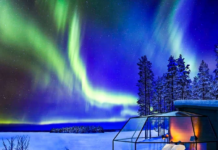When you think of the Maldives you imagine white beaches, the sun beating down on palm trees and clear water. The classic natural paradise worthy of a desktop wallpaper.
Many of these beaches at night, when all is silent and only the sound of the waves resounds, light up like a starry sky revealing the secret: the real show, in the Maldives, is at night.
The beach that LIGHTS UP at night like a starry sky
#The secrets of the Maldives
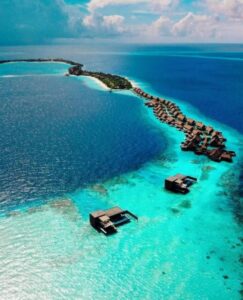
The Maldives are one of the most loved destinations in the world for their endless white beaches and transparent water.
The atolls of Ari, Malè and Baa are the most famous destinations, but there are also other places in the Maldives where you can spend an unforgettable vacation, including the beach of Vaadhoo.
This unique place enchants tourists from all over the world especially for a unique phenomenon that happens at night: the beach lights up and turns into a starry sky.
# The beach that glows at night
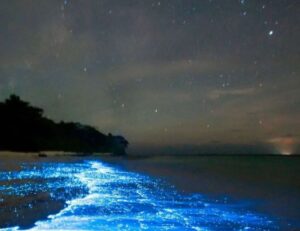
As the waves break on the rocks, a luminous glow of deep blue appears along the sandy shoreline bathed by the ocean.
The result is something unique: thanks to the luminescent water, the entire beach lights up blue like a starry sky.
But why does the beach light up?
# Where does the light come from
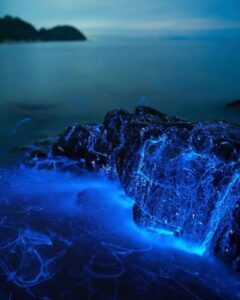
It is not a spell or even an optical illusion, the only one responsible for this spectacle is nature. This magical effect is infact caused by bioluminescent plankton found in the warm waters of coastal areas.
Scientists have discovered that this type of plankton glows when stressed by movement. This can be due to the movement of waves crashing along the shore or from feet moving the thin layer of water along the shoreline when people walk on the beach.
This type of plankton (the phytoplankton), called Lingulodinium polyedrum, produces light using a chemical called luciferin, which it creates on its own.
The best time to witness this phenomenon is from mid-summer through winter, although it can occur throughout the year.
# All beaches that light up
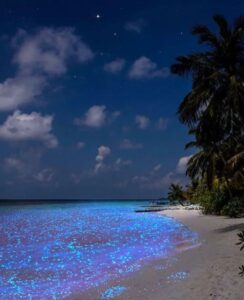
Almost all the islands of the Maldives are inhabited by this plankton but they are not alone, in fact in the world there are many places where this extraordinary natural phenomenon occurs.
Among these we find the coast of San Diego and Leucadia in California, the Everglades, Thailand, Australia, Vietnam, Puerto Rico and Jamaica.
The light that the small plankton emits is called “cold light”, because it is less than 20% of the light generated by heat. Because of this phenomenon, being able to photograph this wonder can be quite a feat.
But in the end, for all things, the best camera are always your eyes.
ARIANNA BOTTINI





